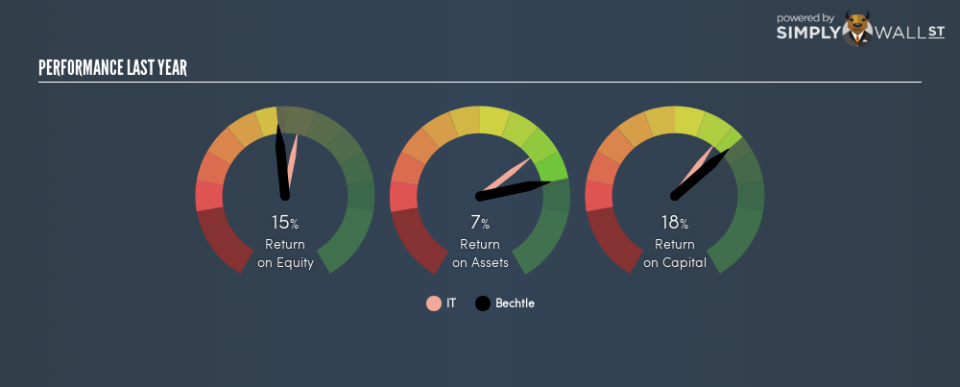A Close Look At Bechtle AG’s (ETR:BC8) 18% ROCE

Today we’ll look at Bechtle AG (ETR:BC8) and reflect on its potential as an investment. In particular, we’ll consider its Return On Capital Employed (ROCE), as that can give us insight into how profitably the company is able to employ capital in its business.
First of all, we’ll work out how to calculate ROCE. Then we’ll compare its ROCE to similar companies. Finally, we’ll look at how its current liabilities affect its ROCE.
Understanding Return On Capital Employed (ROCE)
ROCE is a measure of a company’s yearly pre-tax profit (its return), relative to the capital employed in the business. In general, businesses with a higher ROCE are usually better quality. In brief, it is a useful tool, but it is not without drawbacks. Author Edwin Whiting says to be careful when comparing the ROCE of different businesses, since ‘No two businesses are exactly alike.’
How Do You Calculate Return On Capital Employed?
Analysts use this formula to calculate return on capital employed:
Return on Capital Employed = Earnings Before Interest and Tax (EBIT) ÷ (Total Assets – Current Liabilities)
Or for Bechtle:
0.18 = €164m ÷ (€1.8b – €780m) (Based on the trailing twelve months to September 2018.)
So, Bechtle has an ROCE of 18%.
View our latest analysis for Bechtle
Is Bechtle’s ROCE Good?
ROCE is commonly used for comparing the performance of similar businesses. In our analysis, Bechtle’s ROCE is meaningfully higher than the 12% average in the IT industry. We consider this a positive sign, because it suggests it uses capital more efficiently than similar companies. Separate from Bechtle’s performance relative to its industry, its ROCE in absolute terms looks satisfactory, and it may be worth researching in more depth.
When considering this metric, keep in mind that it is backwards looking, and not necessarily predictive. Companies in cyclical industries can be difficult to understand using ROCE, as returns typically look high during boom times, and low during busts. ROCE is, after all, simply a snap shot of a single year. Since the future is so important for investors, you should check out our free report on analyst forecasts for Bechtle.
Bechtle’s Current Liabilities And Their Impact On Its ROCE
Current liabilities are short term bills and invoices that need to be paid in 12 months or less. Due to the way the ROCE equation works, having large bills due in the near term can make it look as though a company has less capital employed, and thus a higher ROCE than usual. To counteract this, we check if a company has high current liabilities, relative to its total assets.
Bechtle has total liabilities of €780m and total assets of €1.8b. Therefore its current liabilities are equivalent to approximately 44% of its total assets. Bechtle has a medium level of current liabilities, which would boost the ROCE.
Our Take On Bechtle’s ROCE
While its ROCE looks good, it’s worth remembering that the current liabilities are making the business look better. You might be able to find a better buy than Bechtle. If you want a selection of possible winners, check out this free list of interesting companies that trade on a P/E below 20 (but have proven they can grow earnings).
If you are like me, then you will not want to miss this free list of growing companies that insiders are buying.
To help readers see past the short term volatility of the financial market, we aim to bring you a long-term focused research analysis purely driven by fundamental data. Note that our analysis does not factor in the latest price-sensitive company announcements.
The author is an independent contributor and at the time of publication had no position in the stocks mentioned. For errors that warrant correction please contact the editor at editorial-team@simplywallst.com.

 Yahoo Finance
Yahoo Finance 
